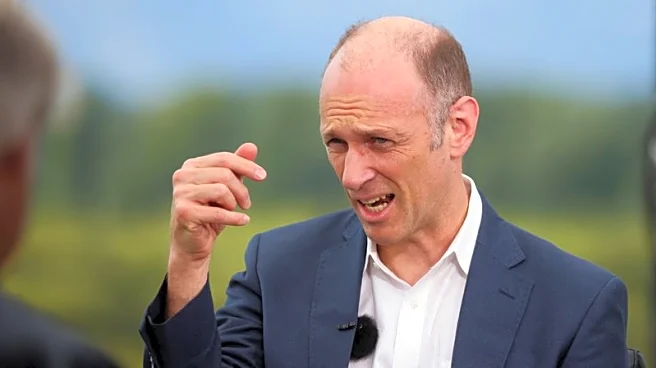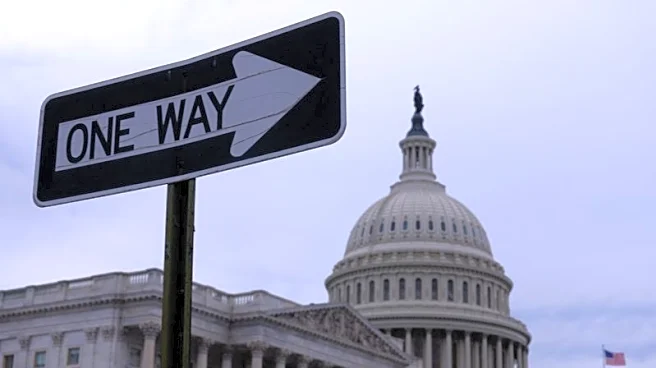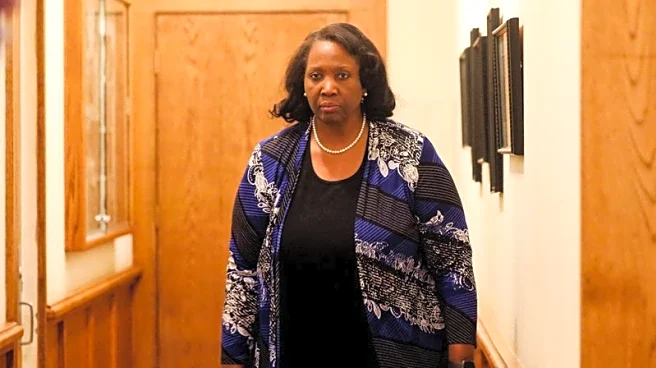By Michael S. Derby
(Reuters) -Federal Reserve Governor Stephen Miran on Friday again pressed for an aggressive path of rate cuts given big changes in the economy driven by the Trump administration, while
at the same time arguing the gulf between his outlook and that of his central bank colleagues is not as great as some perceive it to be.
“My view is that if policy is out of whack, you should adjust it at a reasonably...brisk pace,” Miran said in an interview on Bloomberg television. When it comes to the current setting of central bank interest rate policy, “we're not at the point yet where, if you sort of keep it there another day, it's a crisis, but if you keep it there for an extra year, yeah, I think you have…problems on your hands.”
Miran said his belief that monetary policy needs to be much easier than it is now is based on his view that economic shifts largely on the immigration front suggest that the so-called neutral interest rate has declined from where it was. That means that Fed policy has become more restrictive of growth, Miran said.
Miran spoke on a day the government was supposed to release its latest employment sector report but did not due to a shutdown created by elected leaders' failure to agree on a budget. Miran did not express concern about missing the report, noting the central bank still has time before its next meeting scheduled for late October.
Miran is the Fed's newest governor and in a highly unusual state of affairs is on leave from a job at the Trump White House. He dissented in favor of a half percentage point rate cut at the interest-rate setting Federal Open Market meeting last month. Then, officials trimmed their federal funds rate target range by a quarter percentage point to between 4% and 4.25% as they sought to balance a desire to lower still-high inflation while providing support for a weakening jobs market.
Officials also penciled in further rate cuts and see the interest rate target in the 3.5% to 3.75% range by year's end, with a move to between 3.25% and 3.5% in 2026.
Miran's preference for aggressive rate cuts puts him at a distance from most policymakers, especially as a wide range of regional Fed bank presidents are still worried about lowering rates with inflation well above the Fed's 2% target and expected to accelerate as President Donald Trump's tariffs surge through the economy.
SERVICES INFLATION PUTS FED IN A STICKY SPOT
Speaking on CNBC, Chicago Fed President Austan Goolsbee said the Fed now finds itself in "a bit of a sticky spot" with recent data showing an upswing in services inflation while payroll job creation has been weakening.
"You see this uptick in inflation and particularly the uptick in services inflation, which is probably not coming from tariffs," he said, adding "I'm a little wary about front-loading too many rate cuts and just counting on the inflation going away."
In a press conference after the September FOMC meeting Fed Chair Jerome Powell hinted at Miran's isolation and said "there wasn’t widespread support at all for a 50-basis-point cut today," noting that policy moves of greater than 25 basis points often happen "when you feel that policy is out of place and needs to move quickly to a new place. That’s not at all what I feel, certainly now."
That said, while Fed Vice Chair for Supervision Michelle Bowman voted for the 25-basis-point cut, she has since argued that Fed policy is at risk of falling behind the curve in offsetting risks to the labor sector.
In his remarks to the television channel, Miran said his longer-run expectations for monetary policy are not dissimilar from other policymakers and "all that's different is the fact that I want to get there a little bit faster."
Miran also shrugged off the risks of cutting rates aggressively at a time when financial markets have been very buoyant and could rise further on cheaper short-term borrowing costs.
"It can be a little bit of a mistake to look at financial conditions and infer something necessarily about the stance of monetary policy, because they can be driven up by other things," Miran said. And he added financial conditions are "not all loose" and housing finance, for example, is "relatively tight."
(Reporting by Michael S. Derby and Dan Burns; Editing by Andrea Ricci )











